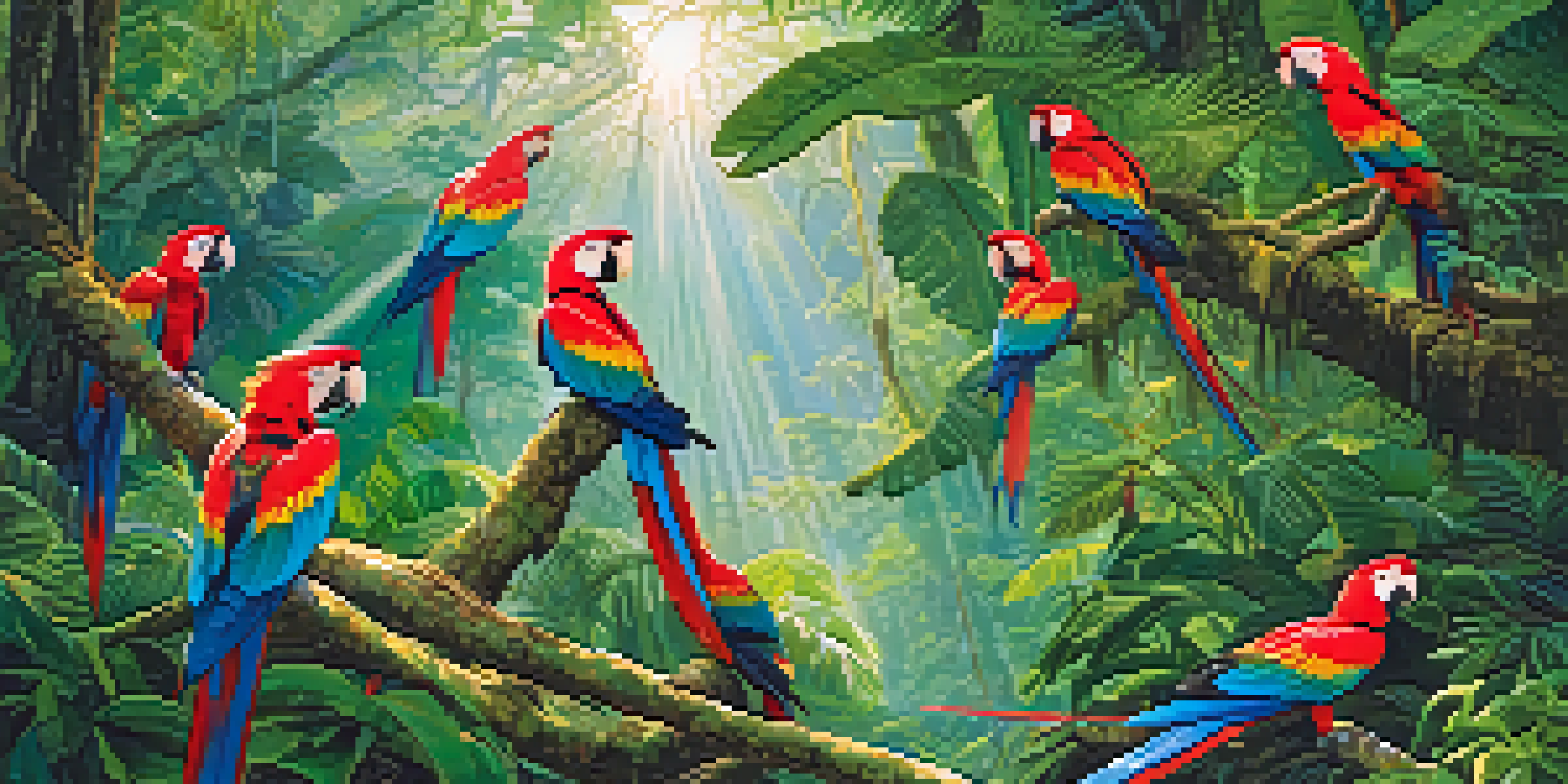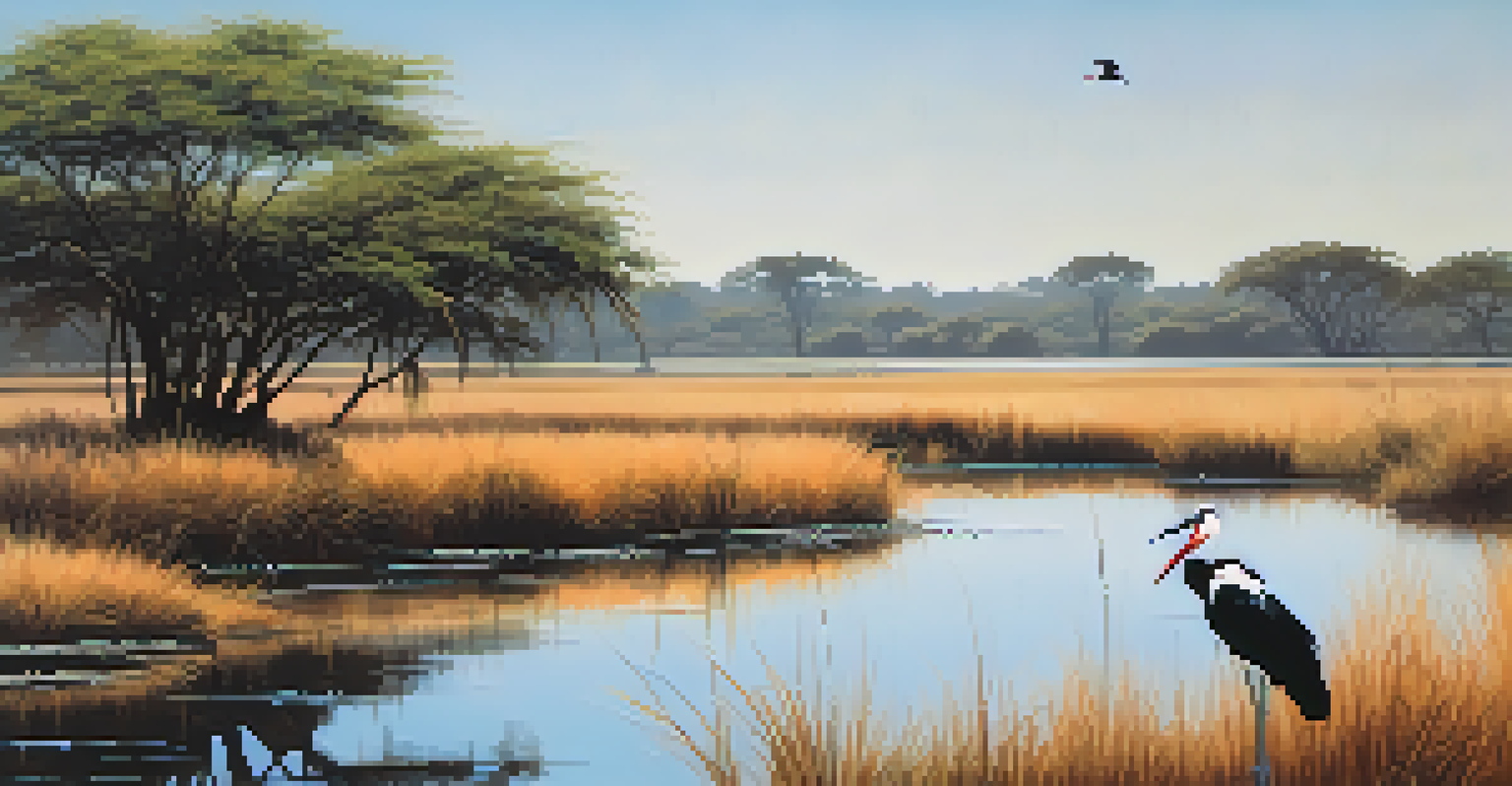The Best Time of Year for Birdwatching in Brazil

Understanding Brazil's Unique Birdwatching Seasons
Brazil is a birdwatcher's paradise, with its vast ecosystems ranging from the Amazon rainforest to the Pantanal wetlands. Each season brings different species to the forefront, making it crucial for bird enthusiasts to know when to visit. Understanding these seasonal patterns can significantly enhance your birdwatching experience.
Birdwatching is not just a hobby; it’s a way to connect with nature and understand the world around us.
During the wet season, typically from November to March, migratory birds flock to Brazil, drawn by abundant food and milder weather. This is a great time to spot unique species that you might not see during the dry months. Conversely, the dry season offers clearer visibility and easier access to remote areas, allowing you to explore diverse habitats more effectively.
By aligning your birdwatching trip with these seasonal shifts, you can maximize your chances of encountering a wide variety of birds. Whether you prefer the vibrant activity of the wet season or the tranquility of the dry season, Brazil has something to offer year-round.
Peak Birdwatching Months: December to March
The months of December to March are considered the peak for birdwatching in Brazil. During this time, the rainforests come alive with the arrival of migratory species, making it an exciting period for bird enthusiasts. Many tropical birds, including the stunning scarlet macaw, are particularly active and visible.

In addition to the influx of migratory birds, the lush vegetation provides ample nesting sites and food sources, which further attracts birdlife. Birdwatchers can enjoy the vibrant colors and songs of birds as they engage in mating rituals and nesting activities. This makes for a captivating experience, as you’ll witness nature at its most dynamic.
Birdwatching Peaks from Dec to Mar
The months from December to March offer the best opportunities for spotting vibrant migratory birds in Brazil's lush rainforests.
Moreover, popular birdwatching destinations such as the Amazon rainforest and Pantanal are particularly rich in biodiversity during these months. Planning your visit around this peak season ensures you won’t miss out on the remarkable variety of avian life that Brazil has to offer.
Exploring the Dry Season: May to August
While the wet season garners much attention, the dry season from May to August also presents unique opportunities for birdwatching in Brazil. During these months, the foliage thins out, making it easier to spot birds as they perch on branches or hunt for food. This clearer visibility can lead to some truly spectacular sightings.
In every walk with nature, one receives far more than he seeks.
In the Pantanal, a region renowned for its wildlife, the dry season is optimal for observing species like the jabiru stork and various hawks. As water levels recede, birds congregate around the remaining ponds and rivers, creating excellent viewing opportunities. The combination of fewer insects and lower humidity can also make for a more comfortable birdwatching experience.
Additionally, the dry season is favorable for exploring other regions, such as the coastal Atlantic Forest, where migratory shorebirds can be seen. This diverse range of habitats ensures that birdwatchers have plenty to discover, no matter the time of year.
The Importance of Local Climate Patterns
Brazil's vast geography means that local climate patterns can significantly influence birdwatching opportunities. Different regions have unique weather systems that affect the timing of migratory patterns and the visibility of resident species. Understanding these local climates can help birdwatchers plan more effectively.
For instance, the Amazon region experiences heavy rains that can lead to flooding, impacting bird behavior and accessibility. Conversely, regions like the Caatinga have a drier climate, resulting in different species that thrive in arid conditions. By researching these climates, birdwatchers can tailor their trips to match the best conditions for spotting their target species.
Dry Season Offers Unique Sightings
From May to August, clearer visibility and fewer insects enhance birdwatching experiences in Brazil's diverse habitats.
Additionally, local festivals and events can coincide with specific birdwatching seasons, providing a vibrant cultural experience alongside birding. Knowing the rhythms of the local climate not only enhances your birdwatching experience but also enriches your understanding of Brazil's diverse ecosystems.
Best Regions for Birdwatching in Brazil
Brazil is home to numerous birdwatching hotspots, each with its unique charm and avian diversity. The Amazon rainforest is often at the top of most birdwatchers' lists, boasting over 1,300 species, including the elusive harpy eagle and various colorful toucans. Exploring this vast area can be both exhilarating and overwhelming, given its size and complexity.
The Pantanal, on the other hand, is one of the world's largest tropical wetlands and a prime location for spotting large birds like the hyacinth macaw and giant river otters. Its open landscapes make it easier to track and observe birds in their natural habitat. This region is particularly accessible during the dry season, when wildlife viewing is at its peak.
Other notable regions include the coastal Atlantic Forest, known for its endemic species, and the Cerrado, a savanna-like biome rich in unique birdlife. Each of these areas offers a distinct birdwatching experience, showcasing the incredible diversity that Brazil has to offer.
Essential Gear for Birdwatching in Brazil
Having the right gear can make all the difference in your birdwatching experience in Brazil. A good pair of binoculars is essential for spotting birds from a distance, allowing you to appreciate their beauty without disturbing them. Investing in lightweight and waterproof options can enhance your comfort during long hours outdoors.
A field guide specific to Brazilian birds is another crucial tool. These guides will help you identify species quickly and learn more about their habits and habitats. Many birdwatchers also recommend bringing a journal to document your sightings, which can be a rewarding way to reflect on your experiences.
Respect Nature and Local Cultures
Ethical birdwatching involves protecting wildlife and engaging with local communities to support conservation efforts.
Don’t forget about appropriate clothing and gear for the climate you'll be in. Lightweight, breathable fabrics in neutral colors are ideal for blending into the environment. Comfortable hiking boots and a good hat for sun protection are also recommended, ensuring you're well-prepared for long days of exploration.
Respecting Wildlife and Local Communities
As a birdwatcher in Brazil, it’s essential to practice ethical birdwatching. Respecting wildlife and their habitats means minimizing your impact on the environment. Always follow established trails and guidelines to avoid disturbing nesting birds and fragile ecosystems.
Engaging with local communities can also enhance your birdwatching experience. Many indigenous groups and local guides offer invaluable insights into the best birding spots and the unique cultural significance of the birds. Supporting these communities through responsible tourism helps promote conservation efforts and ensures that birdwatching remains sustainable.

Being an ethical birdwatcher not only protects the wildlife you love but also enriches your travels. By fostering a deeper connection with the environment and local cultures, you’ll create more meaningful and memorable birdwatching experiences in Brazil.